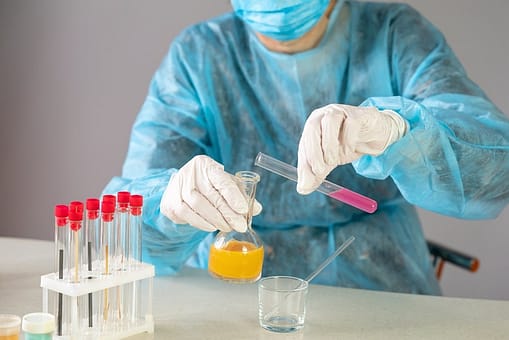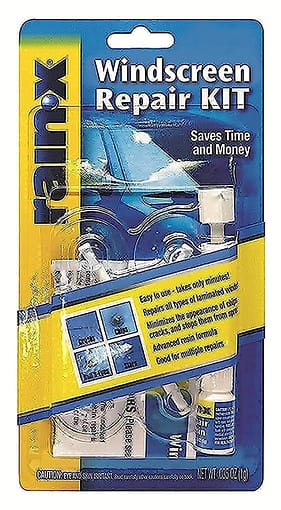Are you an avid DIY enthusiast? Love working on home improvement projects but worry about the potential safety hazards involved? Look no further! Introducing the ultimate guide to staying safe when doing DIY projects. With expert tips, practical advice, and essential precautions, this comprehensive resource will empower you to tackle any project with confidence. From choosing the right protective gear to understanding potential risks, we’ve got you covered. Stay safe and unleash your creativity with ease!

Choosing the Right Project
When it comes to DIY projects, choosing the right one is crucial for your safety. Assessing your skills and knowledge is the first step in determining which project is suitable for you. It’s important to be honest with yourself about your abilities and expertise in different areas. If you’re a beginner, starting with simple and less complex projects can help you gain confidence and experience before moving on to more challenging tasks. By choosing a project that aligns with your skills, you can ensure a safer and more successful DIY experience.
Considering safety precautions is another vital aspect of choosing the right project. Some projects inherently involve more risks than others. For instance, working with electrical systems or using power tools requires a higher level of caution compared to painting a room or assembling furniture. Carefully evaluating the potential hazards associated with a project can help you make an informed decision and avoid venturing into tasks that may pose unnecessary risks to your well-being.
Furthermore, it’s essential to choose appropriate tools and materials for your project. Using the right tools not only makes the job easier but also contributes to your safety. Investing in high-quality tools that are suitable for the task at hand will ensure that you can work efficiently and effectively without compromising your safety. Similarly, using appropriate materials that are designed for the specific purpose can help prevent accidents and ensure the durability of your finished project. Taking the time to research and select the right tools and materials is a crucial step towards a safe and successful DIY endeavor.
Preparing the Work Area
Before you start any DIY project, it’s vital to prepare the work area properly. Taking the time to organize and set up your workspace will not only enhance your productivity but also minimize the risk of accidents and injuries.
Clearing clutter and obstacles is the first step in preparing your work area. An organized and clutter-free space allows for better mobility and reduces the likelihood of tripping or knocking over objects while working. Put away any unnecessary items, and ensure that the area is free from obstacles that may impede your movement.
Providing adequate lighting is also essential for a safe work environment. Insufficient lighting can make it challenging to see what you’re doing and increase the risk of accidents. Make sure your workspace is well-lit, both natural and artificial lighting sources, to ensure clear visibility of your tools, materials, and project area.
Ensuring proper ventilation is another crucial aspect of preparing your work area. Certain DIY projects may involve the use of chemicals or generate dust and fumes that can be harmful if inhaled. Having good airflow and ventilation in your workspace helps to remove hazardous substances and maintain a healthy breathing environment. If necessary, open windows or use fans to improve air circulation.
Using a protective sheet or drop cloth is advisable to safeguard your work area. Depending on the nature of your project, there may be a risk of spills, drips, or debris accumulation. Placing a protective cover on the floor or furniture can prevent damage and make cleanup easier. It also reduces the chance of slipping on any spilled liquids or stepping on small objects that may cause accidents.
Using Personal Protective Equipment (PPE)
Personal Protective Equipment (PPE) plays a crucial role in ensuring your safety during DIY projects. Wearing the appropriate PPE can protect you from potential hazards and mitigate the risk of injuries.
Safety glasses or goggles are essential for eye protection. When working with tools, chemicals, or any task that may produce flying debris or dust, wearing safety glasses or goggles is vital to prevent eye injuries. They shield your eyes from potential projectiles and hazardous substances, ensuring that your vision remains unharmed.
Ear protection is important when working with loud tools or in a noisy environment. Prolonged exposure to loud noise can lead to hearing damage, so wearing earplugs or earmuffs is necessary to reduce noise levels and protect your hearing. Invest in quality ear protection devices that fit well and provide adequate noise reduction.
Protective gloves are essential for hand protection. When handling sharp objects, working with chemicals, or engaging in physically demanding tasks, wearing gloves can prevent cuts, burns, or chemical exposure. Choose gloves made from durable materials that are suitable for the type of work you’ll be doing.
When working with materials that produce dust, fumes, or harmful particles, using dust masks or respirators can help protect your respiratory system. These devices filter the air you breathe, preventing inhalation of hazardous particles and ensuring cleaner air intake. Research the appropriate type of mask or respirator for the task at hand and choose one that offers adequate respiratory protection.
Safety shoes or boots are crucial for foot protection. They provide stability, support, and prevent injuries from falling objects or accidental impacts. When working in environments where there is a risk of heavy objects or materials falling on your feet, wearing safety footwear is essential to prevent foot injuries.
Working with Electricity
Working with electricity requires special precautions to ensure your safety. Electricity can be hazardous, so it’s crucial to take the necessary steps to mitigate the risks involved.
Before starting any electrical work, always shut off the power. Identifying the correct breaker or fuse and turning off the electricity to the area you’ll be working in is essential. This eliminates the risk of electric shock and protects you from accidental contact with live wires or electrical components.
Using Ground Fault Circuit Interrupters (GFCIs) is a crucial safety measure when working with electricity. GFCIs are electrical outlets or circuit breakers that detect imbalances in the electrical current and automatically shut off the power to prevent electrical shocks. Install GFCIs in areas where water and electricity may come into contact, such as kitchens, bathrooms, or outdoor areas, to minimize the risk of electrical accidents.
Avoiding water exposure is vital when working with electrical systems. Water is an excellent conductor of electricity and can increase the risk of electric shock or short circuits. Ensure that your work area is dry, and keep all electrical tools and cords away from water sources to prevent accidents.
Testing for live wires is a crucial step before starting any electrical work. Use a voltage tester or a multimeter to check for the presence of electricity in wires, outlets, or switches. This will help you identify any live circuits and take appropriate measures to ensure your safety.
Using insulated tools is essential when working with electricity. Insulated tools have rubber or plastic handles that provide insulation from electrical current. They help prevent electric shock by minimizing direct contact between live wires and your hands. Always choose and use insulated tools specifically designed for electrical work to reduce the risk of electrical accidents.

Handling Tools Correctly
Proper handling of tools is essential to ensure your safety and the successful completion of your DIY projects. Following these guidelines will help you use your tools safely and effectively.
Reading and following the tool manual is crucial before using any tool. The manual provides important information regarding proper usage, maintenance, and safety precautions. Familiarize yourself with the manual to understand the tool’s functions, limitations, and safety recommendations.
Using tools in good working condition is vital. Regularly inspect your tools for any signs of damage, such as loose parts, fractures, or worn-out blades. Using tools that are in optimal condition ensures their proper functioning and reduces the risk of accidents or malfunctions.
Using tools for their intended purpose is a fundamental safety principle. Each tool has a specific function and is designed to perform a certain task. Using a tool in a way it wasn’t intended for not only increases the risk of accidents but also diminishes its effectiveness. Always use tools for their intended purposes to ensure optimal safety and results.
Keeping tools clean and sharp is essential for both their longevity and your safety. Clean tools are easier to handle and less prone to slips or mishaps caused by dirt or grime. Additionally, sharp tools reduce the risk of accidents caused by excessive force or poor cutting performance. Regularly clean your tools and sharpen blades as needed to maintain their effectiveness and safety.
Avoiding shortcuts or improvised tools is strongly advised. While it may seem tempting to take a quicker route or use a makeshift tool, it significantly undermines safety and can lead to accidents or damage. Always use the appropriate tool for the job and follow established procedures to ensure a safe and successful outcome.
Proper Handling and Disposal of Chemicals
When working with chemicals, it’s crucial to prioritize safety through proper handling and disposal practices. Adhering to these guidelines will help protect your health and the environment.
Reading and understanding safety labels on chemical products is essential. Safety labels provide valuable information about the potential hazards associated with a chemical, as well as instructions for safe handling and usage. Take the time to familiarize yourself with these labels, including any recommended personal protective equipment and first aid measures.
Wearing protective clothing is vital when handling chemicals. Depending on the nature of the chemicals involved, wearing gloves, goggles, aprons, or respirators may be necessary to shield your skin, eyes, and respiratory system. Always select the appropriate protective gear based on the specific chemicals you’ll be working with and follow safety recommendations.
Using chemicals in well-ventilated areas is crucial. Many chemicals emit fumes or vapors that can be hazardous if inhaled in high concentrations. Ensure that your workspace has good air circulation or use additional ventilation methods like fans or exhaust systems to reduce exposure to harmful substances.
Storing chemicals properly is essential for both safety and longevity. Keep chemicals in their original containers with securely tightened lids to prevent leaks or spills. Store them in well-ventilated areas away from sources of heat, flames, or direct sunlight. Additionally, keep chemicals out of reach of children or pets to avoid accidental ingestion or exposure.
Disposing of chemicals safely is important to minimize environmental impact and prevent harm. Follow local regulations and guidelines for the proper disposal of chemical waste. This may include taking them to designated collection points or contacting local authorities for guidance on safe disposal methods. Avoid pouring chemicals down drains, toilets, or into the environment, as this can contaminate water sources and harm ecosystems.
Working at Heights
When working at heights, taking the necessary precautions is crucial to prevent falls and other accidents. Follow these guidelines to ensure your safety when working on elevated surfaces.
Using stable and secure ladders is vital. Choose a ladder that is appropriate for the task at hand and ensure it is in good condition. Inspect the ladder for any defects, such as loose rungs or damaged parts, before every use. Set up the ladder on a stable and level surface and make sure it is securely positioned before climbing.
Positioning ladders on even surfaces eliminates the risk of the ladder tipping or sliding. Avoid placing the ladder on uneven, slippery, or unstable surfaces. It’s advisable to use ladder levelers or stabilizers when working on uneven terrain to maintain the ladder’s stability and prevent accidents.
Not overreaching on ladders is crucial for maintaining balance and stability. Overreaching can cause the ladder to become unstable and potentially lead to a fall. Always keep your weight centered between the ladder’s side rails and avoid leaning or stretching too far to reach objects.
Using fall protection systems is vital for working at greater heights or on roofs. When the risk of falls is higher, such as during construction or roof repairs, utilizing safety harnesses, anchor points, and guardrails can save your life. Follow industry standards and regulations in your region regarding the use of fall protection systems to ensure proper safety measures are in place.
Using scaffolding or elevated platforms is recommended for more extensive or prolonged work at heights. Scaffolding provides a sturdy and secure platform for multiple workers and equipment. When using scaffolding, ensure it is properly erected, stable, and equipped with guardrails to prevent falls. Follow the manufacturer’s instructions and any local regulations for safe scaffold installation and usage.
Avoiding Fire Hazards
Fire hazards can pose a significant risk during DIY projects, but taking preventive measures can help eliminate or minimize these risks. Follow these guidelines to ensure fire safety in your workspace.
Keeping flammable materials away from ignition sources is crucial for fire prevention. Flammable substances, such as paints, solvents, or gasoline, should be stored in appropriate containers and kept away from heat sources, open flames, or electrical sparks. Establish a designated storage area for flammable materials, ensuring it is well-ventilated and away from any potential fire hazards.
Having fire extinguishers ready is essential for prompt response in case of a fire. Make sure you have a fire extinguisher readily available in your workspace, and ensure it is appropriately maintained and regularly inspected. Familiarize yourself with the proper use of fire extinguishers, and if you’re unsure, receive proper training on operating them effectively.
Checking cords and wires for damages is important to prevent electrical fires. Inspect power cords, extension cords, and electrical wiring for any signs of wear, fraying, or exposed wires. Damaged cords or wires can lead to short circuits or electrical sparks, increasing the risk of fire. Replace any damaged cords or wires immediately to maintain electrical safety.
Avoiding overloading electrical circuits is crucial to prevent overheating and potential electrical fires. Distribute electrical loads evenly among circuits and avoid plugging multiple high-wattage devices into a single outlet or power strip. Overloading circuits can cause overheating and increase the risk of electrical malfunctions or fires. If you find that you require additional power supply, consult a licensed electrician to install additional circuits or outlets.
Properly storing flammable liquids is essential for fire safety. Flammable substances should be stored in designated containers that are tightly sealed and made of appropriate materials. Ensure that the storage area is well-ventilated, away from heat sources, and properly labeled to prevent accidents and facilitate safe handling.
First Aid and Emergency Preparedness
Being prepared for emergencies and having basic first aid knowledge is crucial for ensuring your safety during DIY projects. Follow these guidelines to be adequately prepared in case of accidents or emergencies.
Having a first aid kit readily available is essential. A well-stocked first aid kit should include items such as bandages, antiseptic solution, adhesive tape, pain relievers, and emergency contact information. Keep the kit in a easily accessible location, and ensure all family members are aware of its whereabouts.
Knowing basic first aid techniques is important for immediate response to injuries. Educate yourself on basic first aid procedures such as cleaning wounds, applying bandages, immobilizing fractures, and performing CPR if necessary. You can undergo formal first aid training or take online courses to enhance your first aid skills.
Recognizing emergency signs and symptoms is crucial for prompt action. Be familiar with the signs of medical emergencies such as heart attacks, strokes, or severe allergic reactions. Being able to identify these symptoms allows you to seek appropriate medical help without delay.
Knowing emergency exit routes is vital for quick and safe evacuation. Familiarize yourself with the layout of your home or workspace and identify the nearest exits. Plan multiple escape routes and practice evacuation drills regularly to ensure a swift and efficient response in case of emergencies.
Keeping emergency contacts handy is important for immediate access to help. Save important phone numbers, including those for emergency services, medical professionals, and trusted individuals who can assist during emergencies. Store these numbers in your phone and keep a printed list in a visible and easily accessible location.
Seeking Professional Help When Needed
Recognizing your limits and knowing when to seek professional help is crucial for your safety during DIY projects. Follow these guidelines to determine when professional intervention is necessary.
Recognizing limits and complex projects is important to avoid taking on tasks beyond your expertise. Some projects require specialized knowledge, skills, or equipment that may be beyond your capabilities. Be realistic about your abilities and limitations, and don’t hesitate to seek professional help when the project surpasses your expertise or comfort level.
Knowing when to call an expert is essential when facing challenging or potentially dangerous situations. If you encounter issues that you’re unsure how to handle, it’s best to consult a professional. This could be an experienced contractor, electrician, plumber, or another expert in the respective field. Their knowledge and expertise can ensure the safety and success of the project.
Hiring licensed professionals is crucial for intricate or regulated projects. Certain tasks, such as electrical, plumbing, or structural work, require specialized licenses or certifications. When these projects arise, it’s essential to hire licensed professionals who possess the necessary knowledge and qualifications to ensure safety, compliance with regulations, and quality workmanship.
Getting required permits and inspections is necessary for certain types of projects. Depending on local regulations and the nature of the project, you may need to obtain permits or undergo inspections to ensure compliance with building codes and safety standards. Research the requirements for your specific project and obtain the necessary approvals before commencing work.
Ensuring safety with structural or electrical work is of utmost importance. Projects involving structural modifications or electrical systems can have severe consequences if not executed properly. To guarantee the safety and integrity of these projects, it’s crucial to hire experts who specialize in these areas. Their knowledge and expertise will ensure the work is completed safely, conforming to regulations, and meeting the required standards.
By following these comprehensive guidelines for DIY safety, you can protect yourself and others while enjoying the satisfaction of successfully completing your projects. Remember to always prioritize safety, seek professional help when needed, and stay informed about best practices and regulations. Happy DIYing!













